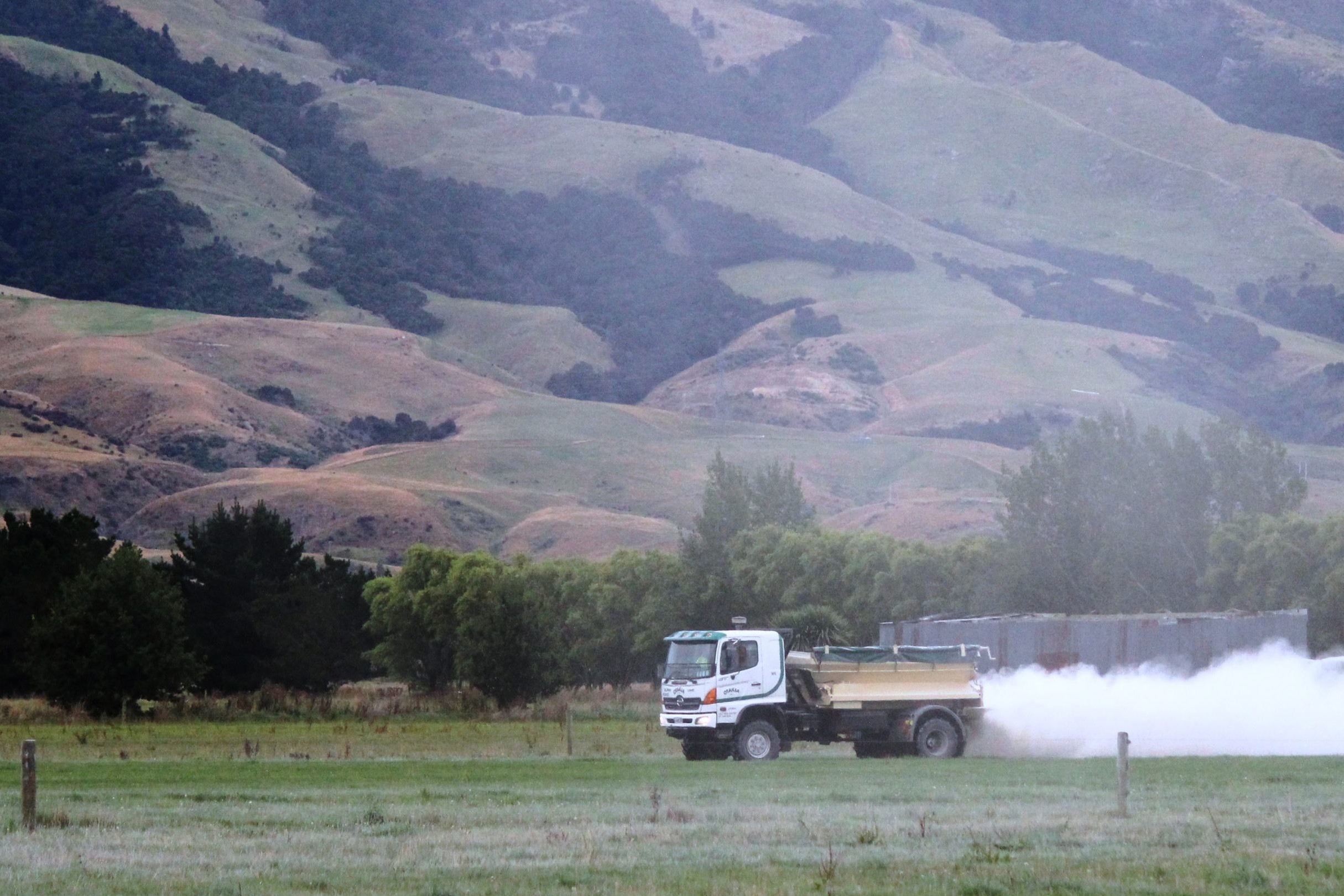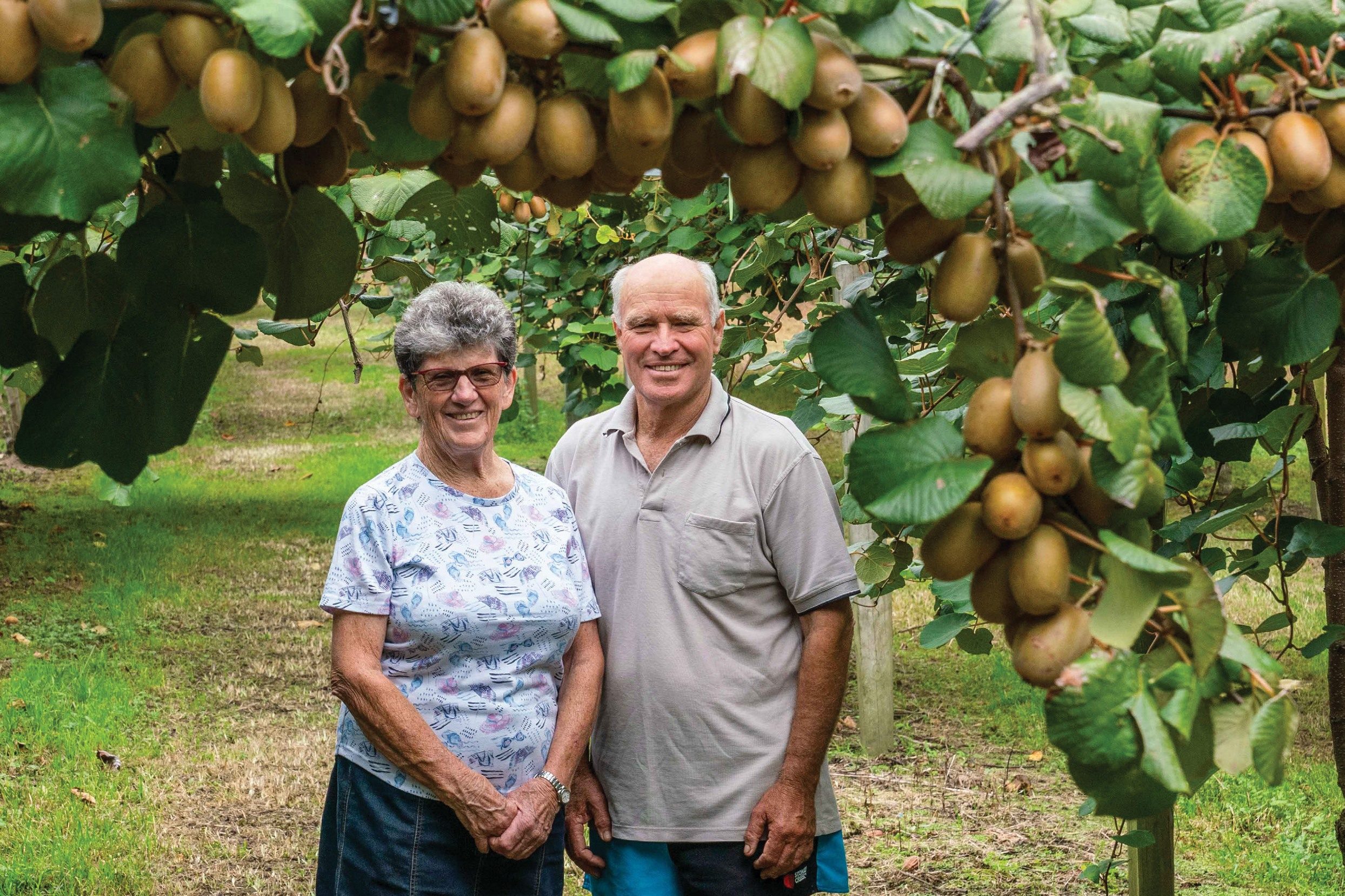Rain is part of life in South Westland, but as Anne Hardie writes, some years it gets even wetter than normal.
Whataroa dairy farmers Kirsty Wilkinson and Damian (Jock) Blackburn are used to high rainfall but this season they faced road closures and were forced to dump milk, with the added challenge of operating a contracting business to get crops in the ground and grass harvested.
The young couple live down a gravel road where tunnels of totara trees dripping with moss tell the tale of a rainfall measured in metres. On the farm they bought seven years ago, rainfall has usually varied between three and six metres a year and last year it passed the 6m mark.
In the December storm that closed the roads north and south, the couple were forced to dump 30,000 litres of milk and helicopters flew essential freight in for locals. Damian missed most of the action by jumping on a helicopter to catch a plane to a five-day stag party on the Gold Coast.
“It was an epic couple of weeks really,” Kirsty says. “Never has anyone around here seen a storm like it and I was certainly on my toes the morning of the storm getting the cows in. We had thunder and lightning for about eight hours non-stop! Our house got two direct hits and blew the fence unit to pieces – I told the kids it was Santa test-driving his sleigh!
“I’m so grateful Jock was still here that morning as he hooked the generator up – then flew in a chopper to Harihari and drove to Christchurch to catch a plane for the stag do. So he missed all the after-match. It wasn’t until he got to Christchurch that he realised the state of the surrounding roads. When the sun came out on the Sunday, the water drained and all of a sudden I had bookings for over 600 bales to be done.”
Despite the heavy rainfall, Damian says the land drains well so the water disappears quickly and then the sun comes out to make it all worthwhile.
potential to grow high-yielding crops as we’ve seen it countless times. It’s just being able to get the timing right and sometimes it’s not possible due to weather which of course has a follow-on effect for the rest of the season”.
‘We had thunder and lightning for about eight hours non-stop! Our house got two direct hits and blew the fence unit to pieces – I told the kids it was Santa test-driving his sleigh!’
The weather often throws a spanner in the works for crops and last year it forced farmers to risk planting swede as late as January which was “too late and you have to throw everything at it”. And as Damian says: “A poor crop is always going to be a poor crop”.
A poor crop leads to buying more supplements and Kirsty says that’s a high cost for South Westland farmers who pay up to $90 a tonne in transport when it comes from the other side of the island. Their own annual freight bill is about $20,000 and that includes carting 100t of a meal that is made up of dried distillers grain (DDG), tapioca and palm kernel.
“It’s cheaper to cut back cow numbers,” Damian says. “Mother nature grows you the cheapest feed; it’s just those pinches and the weather bombs. You’ll be going along really good and then you get a weather bomb.”
This season, for the first time because it was just so wet for so long, they bought in palm kernel as well to fill the gap in grass growth through spring, but don’t intend to keep using it in the future. All the feed is fed in the meal feeding system in the dairy that they installed with the help of Jock’s brother, Nathan. Living in an isolated area means they need to be pretty handy across the board because waiting to get things fixed can take time and usually incurs a high cost.
“You’re an agronomist, bookkeeper, engineer, machinery operator and a counsellor (haha),” Kirsty says.
While the wet climate is the reason they buy in supplements, that climate also has obvious advantages with no need for irrigation and the ability to make supplements such as balage just about any time through the season once there’s surplus, often as late as April.
“Though the cheapest way to harvest grass is in the cows’ mouths,” Damian says.
His contract business began with a baler and the intention of being in charge of their own supplements as well as helping a couple of friends out.
“He came home and said he’d bought a baler for $45,000 and said he was just going to do ours and a couple of friends. But he quite enjoyed it and did a really good job so eventually progressed to another baler and the equipment just started adding up. Now he’s got about 40 clients.”
These days he carries out contract work for balage, silage, cultivation through to seeding, fertiliser spreading and spraying. He also bought a 21t digger to further develop their own farm.
Kirsty’s role at the rural service centre takes 20 hours a week and that fits between 4.45am milking, 3.30pm milking, after-school care of seven-year-old Benji and four-year-old Baxter. In the past they had a preschool at Franz Josef, but when that shut down, some of the locals organised a roster for parents to take turns looking after the little ones. Wednesday is Kirsty’s day off from the store, so that’s the day she takes her turn looking after the pre-school kids.
Through the lower payout years with Westland Milk Products, the combination of contract work and Kirsty’s job helped fill the gaping hole in farm income and going forward with the prospect of better payouts from Yili Group, they will look at employing another person on the farm.
Until now, just the bare essentials get done on the farm between November and March when Damian is busiest with his contracting business – which is why they are planning their wedding for May.
The farm is a work in progress, with many of the cows recording a negative breeding worth (BW) after years of being part of a sire reference scheme where they ran the risk of using poor-quality bulls. But it was affordable for them.
“It didn’t help the breeding, but it helped us financially at the time.” Kirsty says. “Then your priorities change. When you start out you can’t buy nominated semen. Now we’re homing in on what we actually want and what we can achieve out of our animals.”
Damian says the negative figures are reflected in production results for those cows and they are slowly culling them. Even with those cows, the herd is averaging 465kg/MS/cow and their goal is to lift it to 500kg/MS/cow as the herd improves.
Though part of the herd has swung into negative figures through unproven bulls, they originate from a Friesian stud that was run by the previous farm owner, who guided them on their dairy journey after they bought the farm. They’re smaller Friesian cows for the softer ground and in future they will be inseminated with A2 semen to make sure they have the option for that market.
“We’re going to DNA test our herd for breeding A2 to have that option for the future,” Kirsty says. “The whole world seems to be heading in the direction of more specialised products. I think that’s the way it’s going so we’ll try and head down that path.”
Last year 9% of the herd was empty and the year before 11%, so this year they have spent money on CIDRs to reduce those figures and also the calving spread which usually goes from August 1 to October 14.
“Last year we had a dry November and the cows went dormant for a while and didn’t cycle,” she says. “Maybe they couldn’t cope with the heat!”
They’ve noticed the cows head straight for the trees when the sun comes out and think they probably don’t get a chance to acclimatise to hot sun, in the same way herds in Canterbury wouldn’t cope well with West Coast conditions.
Apart from quitting the lower BW cows in the herd, Damian and Kirsty are working toward growing more grass and cutting back on bought-in feed by improving the species of grasses as well as the grass to weed ratio. It works out about 70:30 with the main culprits being dock, buttercup and the dreaded willow weed which is a result of pugging.
It comes with the cost of chemicals and fertiliser and more of the latter has the drawback of encouraging weeds as well. Pugging in a wet climate is the main problem with weeds; the pasture thins out and the weeds love it.
“We need to be growing different pasture cultivars,” Damian says. “They’re trying to push tetraploids, but they get pugged and they’re gone. You’re better off with diploids or hybrids which handle a bit more pugging.”
They’ve begun doing herbage tests on pasture and Kirsty says the results are “often different to what you think is the best tucker”.
When the sun comes out after rain, grass inevitably wants to go to seed and that’s one of the challenges in a wet climate which Kirsty says could be overcome by planting different grasses that don’t all go to seed at once.
For pasture quality, especially as they run a low stocking rate, the heifers follow the cows and are moved on before they take the residuals too low. That system doesn’t always work and this spring there was less grass for the cows and nothing for the heifers to clean up.
By improving pasture and the herd’s productivity, they hope to produce more per cow and per hectare.
Farm facts
Owners: Damian Blackburn and Kirsty Wilkinson
Location: Whataroa, West Coast
Area: 140ha includes 30ha support block
Cows: 240 smaller Friesian cows at peak
Production: 110,000kg MS; 465kg MS/cow
Dairy: 1976 20-aside herringbone
Rainfall: 6m last year
Off-farm work: Contracting and Tasman Agriculture Rural Service Centre





